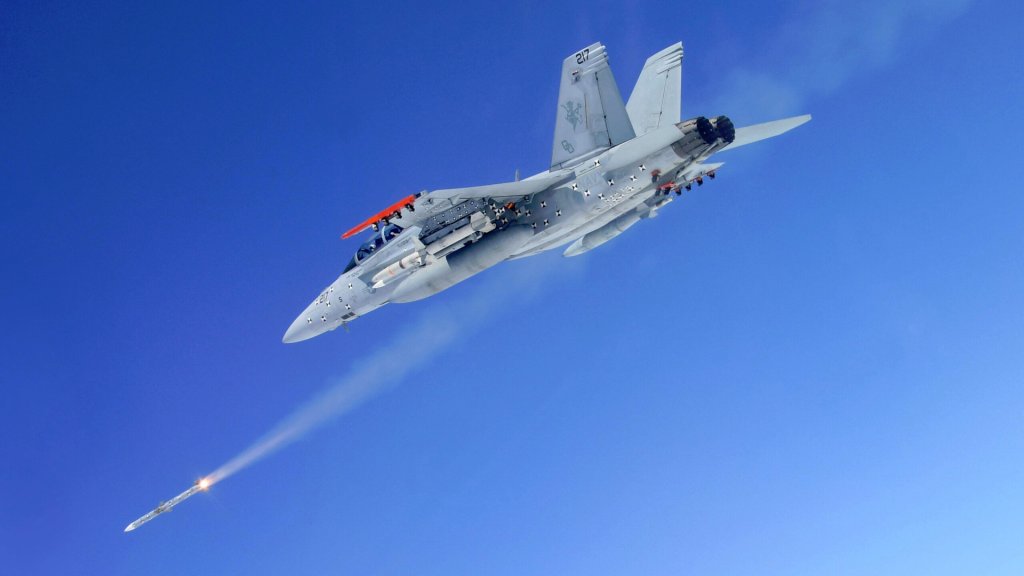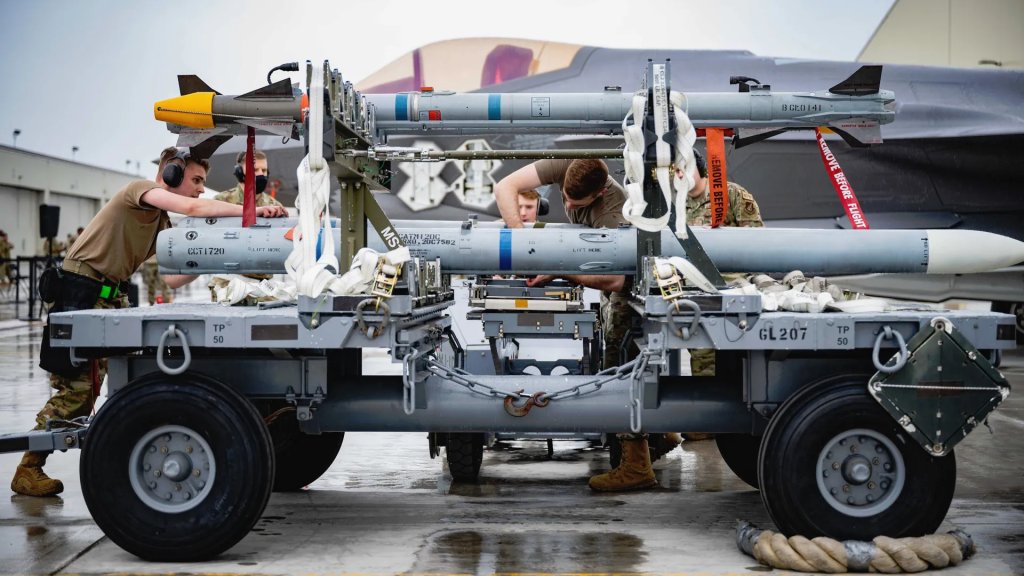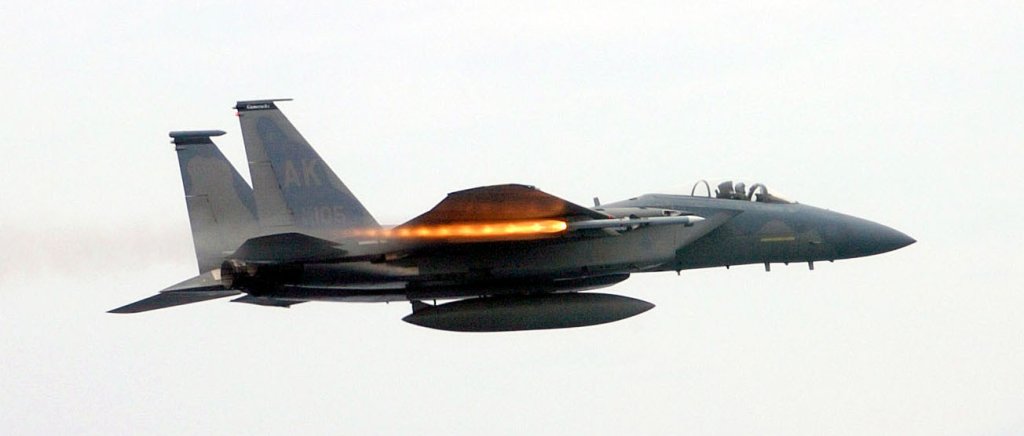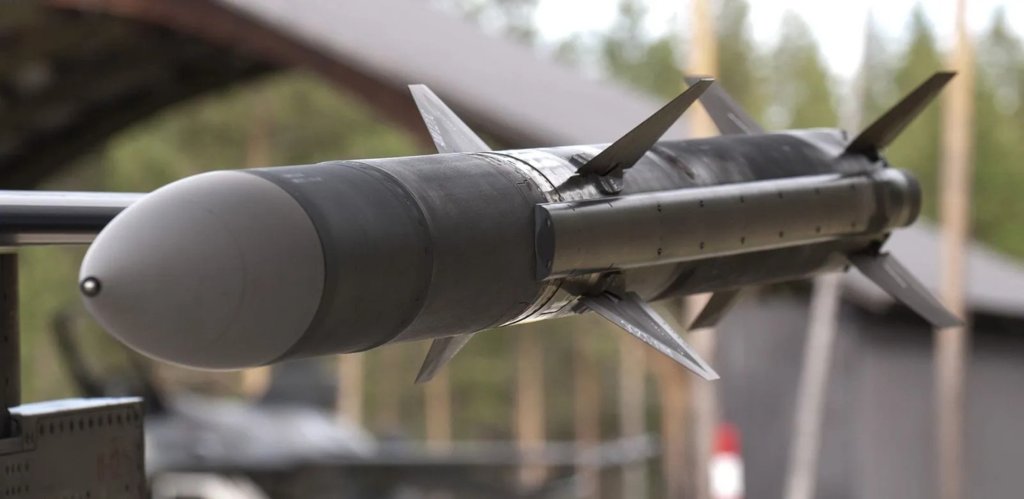There are signs that a new AIM-120E variant of the Advanced Medium-Range Air-to-Air Missile (AMRAAM) may now be in development.
Hints that work on the AIM-120E is underway came after the Air Force Life Cycle Management Center (AFLCMC) put out a notice yesterday regarding a sole-source contract that it had awarded to Raytheon (now formally known as RTX) earlier in March. Raytheon is the current prime contractor for the AIM-120 family, the newest known variant of which is the AIM-120D-3. Within the U.S. military, the U.S. Air Force is the lead service for the joint AMRAAM program. The U.S. Navy and Marine Corps are also users of these combat-proven missiles.
 A US Navy F/A-18 fires an AIM-120 during a test. Raytheon
A US Navy F/A-18 fires an AIM-120 during a test. Raytheon The deal in question, valued at just under $95 million if all options are exercised, is for the “procurement of the Advanced Medium Range Air-to-Air Missile (AMRAAM) Risk Reduction Processor Upgrade for Mission Alliance Risk Reduction,” according to AFLCMC. No further details about this particular upgrade were provided in the notice, and it appears to be unrelated to any forthcoming AIM-120E variant.
“Raytheon will produce and sustain the AIM-120 missile variants and associated configurations for US customers, and variants/associated configurations authorized for release to Foreign Military Sales (FMS),” notes a redacted Justification & Approval (J&A) document that AFLCMC released along with the contract award announcement and that dates back to 2018. “This J&A excludes any potential next generation variants developed after the AIM-120D (i.e. AIM-120E and beyond).”
In many cases, U.S. military contracting offices (and those elsewhere across the U.S. government) must justify the need for a sole-source contract and receive approval before moving ahead without a traditional competitive bidding process.

TWZ reached out to AFLCMC earlier today to clarify whether the AIM-120E designation mentioned in the J&A document reflected a real development effort and, if so, what that might entail, or if this was simply a notional designation for a future AMRAAM variant.
“We don’t have any details that we can provide at this time,” an AFLCMC spokesperson told us flatly in response.
Whether or not any future AIM-120E variant might represent a substantial departure from existing AIM-120s is unknown. The Air Force, as well as the Navy, are now required by law to explore whether extended-range variants or derivatives of the AIM-120 and the AIM-9X Sidewinder could help both services meet their future air-to-air missile needs.
 AIM-9X and AIM-120 missiles on a trailer. USAF
AIM-9X and AIM-120 missiles on a trailer. USAF In particular, a new longer-range version of the AMRAAM could help bridge the gap between existing types and large-scale fielding of the forthcoming AIM-260 Joint Advanced Tactical Missile (JATM). The AIM-260 will have the same general form factor as the AIM-120, in large part to make it easier for existing F-22 Raptors and F-35 Joint Strike Fighters to carry them in their internal bays. As of 2019, the goal was for JATM to start entering service in 2022. However, there are no indications that this has occurred despite continued active testing of the missile, including live-fire shots.
 A rendering of the AIM-260 that the US Air Force has confirmed reflects the real design now in development. USN
A rendering of the AIM-260 that the US Air Force has confirmed reflects the real design now in development. USN The Navy has also now fielded, at least on a limited level, another very-long-range air-to-air missile, the AIM-174B, which is an air-launched version of the multi-purpose surface-launched Standard Missile-6 (SM-6). You can learn more about the AIM-174B here.

Both the AIM-260 and AIM-174B are highly classified, and additional U.S. military air-to-air missile development work is likely to be ongoing in that realm, as well.
It’s also worth noting that Raytheon has already developed an AMRAAM-Extended Range (AMRAAM-ER) derivative, which combines elements of the AIM-120 and the surface-to-air RIM-162 Evolved Sea Sparrow Missile (ESSM). The AMRAAM-ER, which has also sometimes been referred to by the designation AIM-120ER, was designed for surface-to-air use as part of the National Advanced Surface-to-Air Missile System (NASAMS). Raytheon developed NASAMS, which can fire regular AIM-120s, as well as AIM-9Xs and IRIS-T missiles, together with Norway’s Kongsberg Defense.

The idea of an air-launched AMRAAM-ER was put forward at least as far back as 2021, but what progress, if any, may have been made since then in turning that concept into a reality is unclear. What changes would be required to allow for the missile to be internally carried by a stealthy jet like an F-35 is also not clear. The speed and altitude of an aerial launch platform offer benefits when firing any missile, especially when it comes to range and end-game kinematic performance.
Extending the air-to-air reach of U.S. combat aircraft is a particular priority at present. China’s development of increasingly longer-range air-to-air missiles was a key factor in the decision to start developing the AIM-260. There are concerns now that anti-air missiles with ranges of up to 1,000 miles could be part of the threat ecosystem facing U.S. forces by 2050.
When the baseline AIM-120D variant arrived in the mid-2010s, it already offered a significant boost in capability over previous AIM-120 types, including greater range and a two-way datalink with third-party targeting capabilities. In 2021, an F-15C Eagle fighter shot down a target drone with an AIM-120D in what the Air Force described at the time as “the longest known air-to-air missile shot to date.”
 An F-15C Eagle fires an AMRAAM. USAF
An F-15C Eagle fires an AMRAAM. USAF The AIM-120D-3 version offers further improvements, including enhanced seeker performance, and incorporates a new System Improvement Program 3F (SIP-3F) operational flight software upgrade. You can read more about the D-3 here.
“Multiple follow-on SIPs are planned to provide AIM-120D-3 updates to enhance missile performance and resolve deficiencies,” the Pentagon’s Office of the Director of Test and Evaluation (DOT&E) said in its most recent annual report, which it released in January. A SIP-4 upgrade is already in the works for the D-3, the report notes.
Further SIP software updates and other more incremental improvements could be enough to warrant a new designation. The original AIM-120D evolved from a subvariant upgrade effort for the AIM-120C. The AIM-120C-8 subvariant that was subsequently developed for export customers is also understood to have capabilities that are very close to that of the baseline D version.
 Raytheon
Raytheon The Air Force even just talking about the potential for an AIM-120E variant as far back as 2018 underscores the expectation that versions of the AIM-120 will remain in service for decades to come, even with the introduction of new missiles like the AIM-174B and the future AIM-260. Still-expanding exports of AMRAAMs for air-to-air and air-to-surface use, including now to Ukraine, are also likely to continue driving interest in further improving the design.
Whatever the current state of any work on an AIM-120E variant might be, AMRAAM is already a key component of the United States’ air-to-air arsenal, as well as that of many of its allies and partners.
Contact the author: [email protected]

 By The War Zone | Created at 2025-04-01 22:01:07 | Updated at 2025-04-03 00:34:12
1 day ago
By The War Zone | Created at 2025-04-01 22:01:07 | Updated at 2025-04-03 00:34:12
1 day ago








